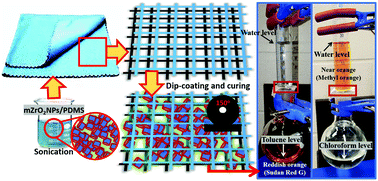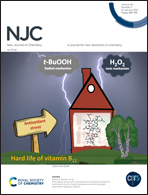New superhydrophobic and self-cleaning zirconia/polydimethylsiloxane nanocomposite coated cotton fabrics
Abstract
In this study, coated cotton fabrics were fabricated from modified zirconia nanoparticles (mZrO2NPs) and polydimethylsiloxane (PDMS). To study the stability, self-cleaning and oil–water separation properties of coated fabrics as superhydrophobic substrates, variants of this coating were also synthesized by varying the concentrations of mZrO2NPs and PDMS contents. The present study reports a new nonfluorinated fabrication route for preparing modified zirconia/PDMS nanocomposite coated fabrics for durable multifunctional applications, including reduced wetting, self-cleaning and oil–water separation. Their surface properties and tendencies toward these multifunctional applications are ascribed to their nanopatterned surface morphologies, nanoporous roughness and low surface energy methyl-bound polysiloxane chemical groups on the cotton fabrics. Experimental results reveal consistent influence of PDMS and mZrO2NPs contents on surface wettability up to optimal concentrations. The coated fabrics in this study demonstrated significant superhydrophobicity at values of static aqueous contact  more than 150° and sliding hysteresis angle
more than 150° and sliding hysteresis angle  less than 5°. The coated fabric with the optimal performance also exhibited significant resistance against chemical and thermal oxidation resistance. It also retained a separation efficiency over 91% for chloroform–water and toluene–water mixtures.
less than 5°. The coated fabric with the optimal performance also exhibited significant resistance against chemical and thermal oxidation resistance. It also retained a separation efficiency over 91% for chloroform–water and toluene–water mixtures.



 Please wait while we load your content...
Please wait while we load your content...